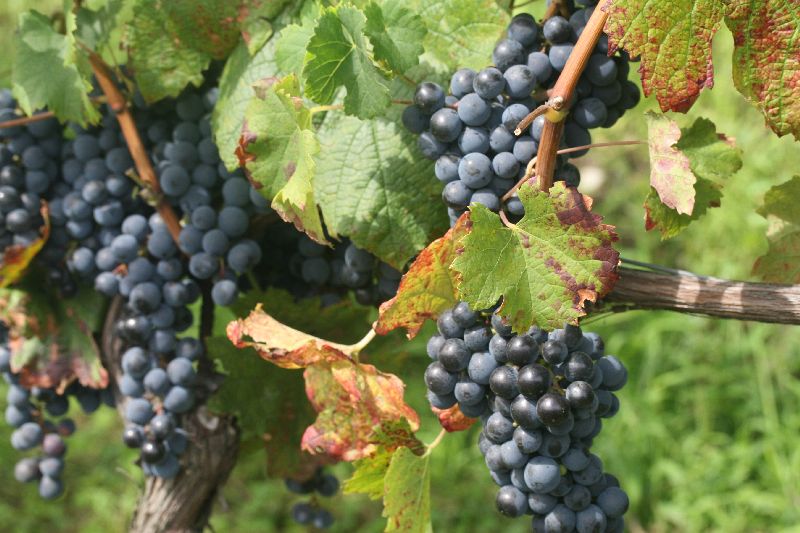Taste reveals the mouth’s secrets.To drink is to swallow a liquid and to let it go from the mouth to the stomach. In technical tastings, the tester obviously doesn’t drink because it is enough for him to have a little sip and to keep it in the mouth and move it around, for to feel it quality; after this, ine is thrwn away.To throw away a good wine sounds terrible! But for to know wine, to recognize its quality and bugs, for to put it in the right place, for to know its evolution and gather all the necessary informations for describing it, there is no need to swallow. The tester who has challenged with the seducing capacities of wine obliges himself to spit it out in order to remain sober and “cold”.
What is taste? Not much, compared to the other senses. The mouth can only feel four different tastes, while the eye sees, the nose smells, and the ears listen to thousands and thousands of sensations. Sweet, salty, bitter and acid:these are the four noted of taste, each with its variations due to higher or lower intensity. The tongue has an extraordinarily rapid and sensible perception. The papillae are placed on the tongue in an order depending on their sensitivity and structure. The bitter tastes are felt by the back part of the tongue; the acid ones by the center and the sides; the sweet ones by the sole tip, the salty by the edges.
But also smell has an important role in taste, since the nasal cavities are directly connected to the mouth: actually, there is some kind of “olfactory taste”. Some may say, that taste is merely the product of four basic tastes; but practically, those sensations, either felt by the mouth or the nose while eating or drinking, become a typical sign of culture, and taste is the aesthetic side of culture, that gives us the sense of beauty in its natural, artistic and ethic unity.
Texts from “Barolo as I feel it” by M. Martinelli (ed. Sagittario 1993)
Massimo Martinelli
I was born near a river, the biggest Italian river, the Po, in a zone where it is already majestic ald solemn. Rivers have been signs and nests for civilisation. To me this is a great cultural honor because the ancient cultures were linked to the rivers, and events in history have often happened on water. Rivers have been ways for transports and commerce, and ideas also; from them I learned that things go, but they don't come back.
So I have a "liquid" sensibility, and I strongly prefer wine to water. I intensely study it. Either as a producer, in the Renato Ratti firm in Annunziata di La Morra, in the core of the land of Barolo, or in writing and talking (courses of wine-testing, of cooking); the titles of my books are well-known (perhaps because they are difficult to find): Wine-testing (Quaderni del Museo Ratti dei Vini di Alba 1975), Langhe cooking wine (edizioni Antoroto-Mondovì 1977). I also gather wine labels; my collection is very interesting. It is composed by around fifty thousand labels.
In the Langhe, in the land of Barolo I have found a very peaceful life.
Massimo Martinelli
-------------------------
Sono nato in riva ad un fiume, il più grande fiume d'Italia, il Po, in un punto in cui è già maestoso ed imponente. I fiumi sono stati i segni e le culle della civiltà. Per me ciò costituisce un grande privilegio culturale essendo le antiche civiltà collegate ai fiumi, come le vicende dell'umanità che si sono svolte lungo i corsi d'acqua! I fiumi inoltre hanno permesso rapidità di scambi commerciali e di idee, per questo so che le cose vanno e non ritornano.
Ho quindi il senso "liquido" e preferisco decisamente il vino all'acqua. Ad esso infatti mi dedico con accanimento. Sia come produzione, nelle Cantine Renato Ratti all'Annunziata di La Morra, nel cuore del Barolo, sia con scritti o interventi divulgativi (corsi di degustazione, di conoscenza, di cucina), con titoli ormai prestigiosi (anche perché introvabili), quali La degustazione (Quaderni del Museo Ratti dei Vini di Alba 1975), Langhe cucina vino (edizioni Antoroto-Mondovì 1977). Ed ancora raccogliendo le etichette dei vini, oggetto di collezione che può essere considerata fra le più interessanti, con circa 50 mila esemplari.
Nelle Langhe, nelle terre del Barolo ho trovato una grande oasi di pace.
Massimo Martinelli
Posts by Massimo
|

